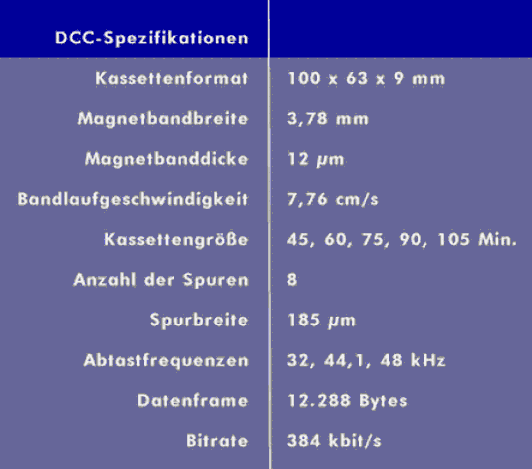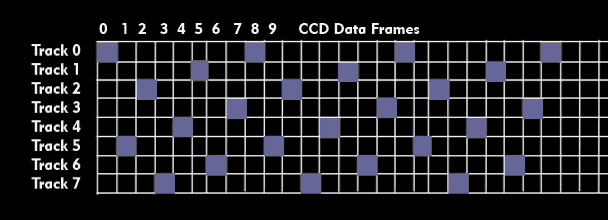digital compact cassette (DCC)
Digital Compact Casette (DCC) is the digital successor technology to the well-known Compact Cassette( CC). The tape speed is 7.76 cm/s and is compatible with the compact cassette, as are the magnetic tape width of 3.78 mm and the cassette size. The number of audio tracks is eight. With a resolution of up to 18 bits, a high sound volume is achieved.
To increase dynamics, the DCC cassette uses Emphasis technology, in which higher frequency ranges are boosted during recording and attenuated during playback. With this technique, DCC recordings achieve a dynamic range of 105 dB and a distortion factor of 0.0025%.
DCC cassettes work with data reduction and use Precision Adaptive Subband Coding( PASC), an MPEG-like technique, as the compression method. The compression factor achieved with PASC is 4:1, and the data rate is 384 kbit/s.
Without synchronization, the DCC frame consists of 12,288 bytes, made up of 8,192 bytes for the PASC data, 128 bytes for the system information and 3,968 bytes for error detection and correction. The individual frames are distributed like a checkerboard over the eight tracks.


